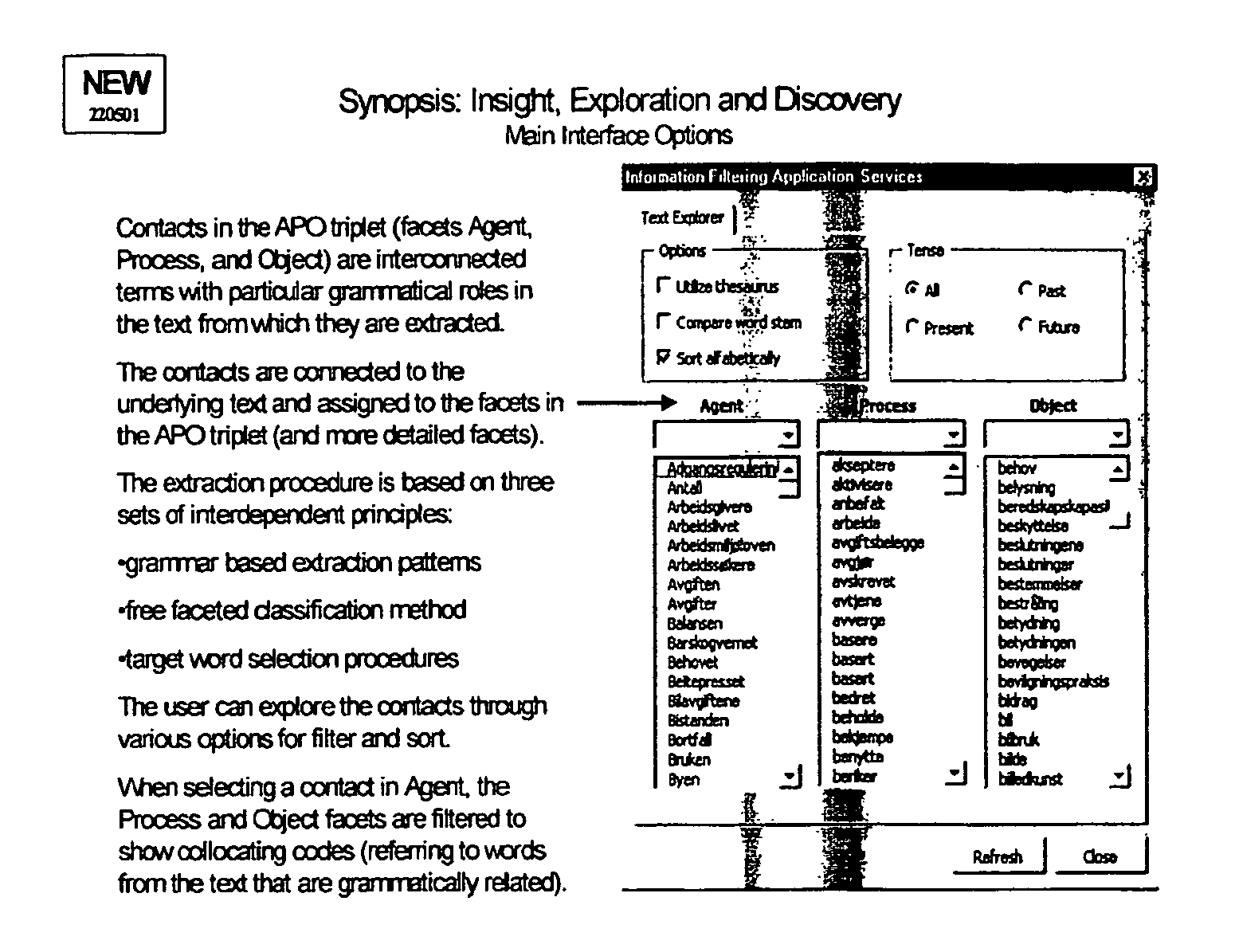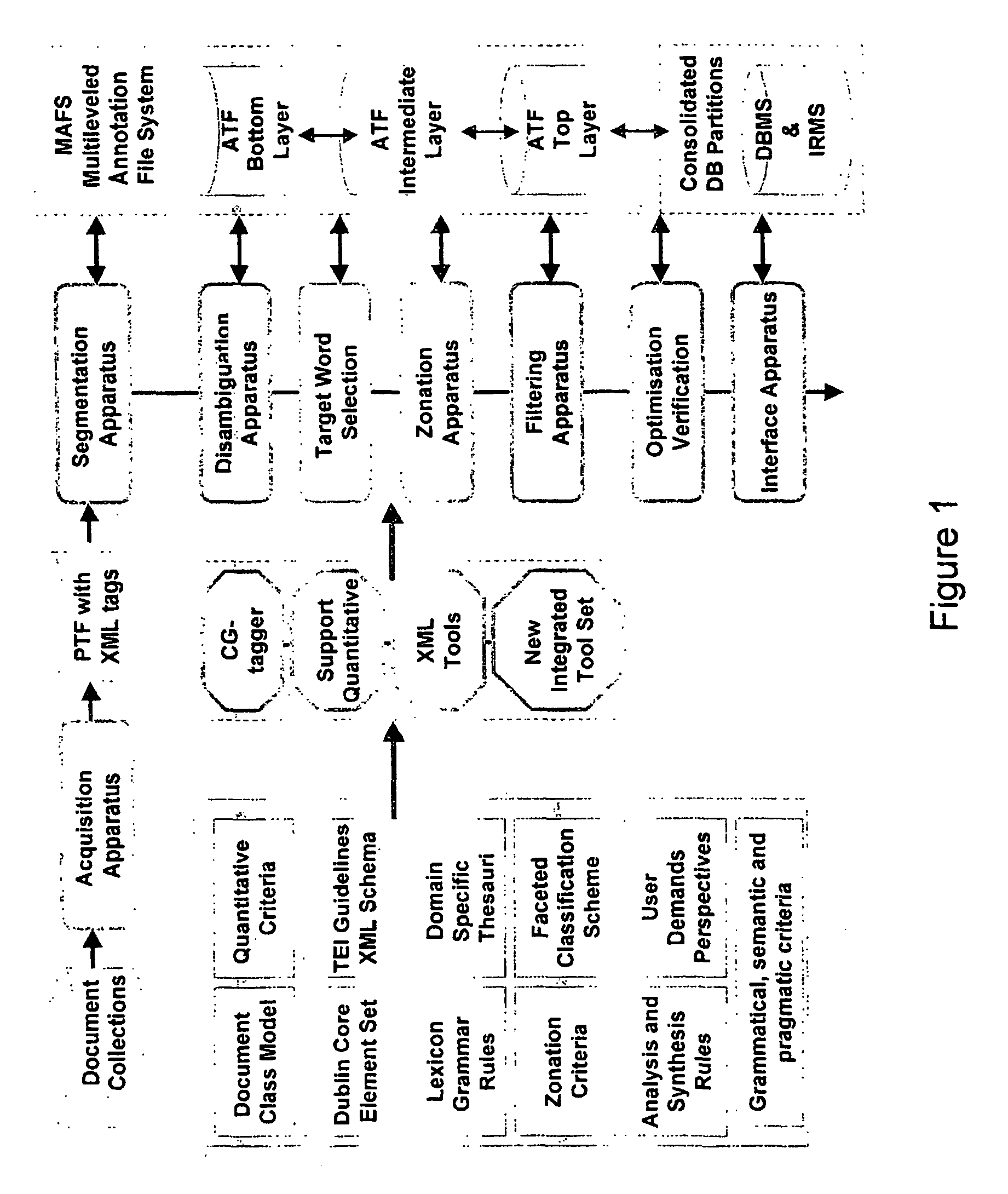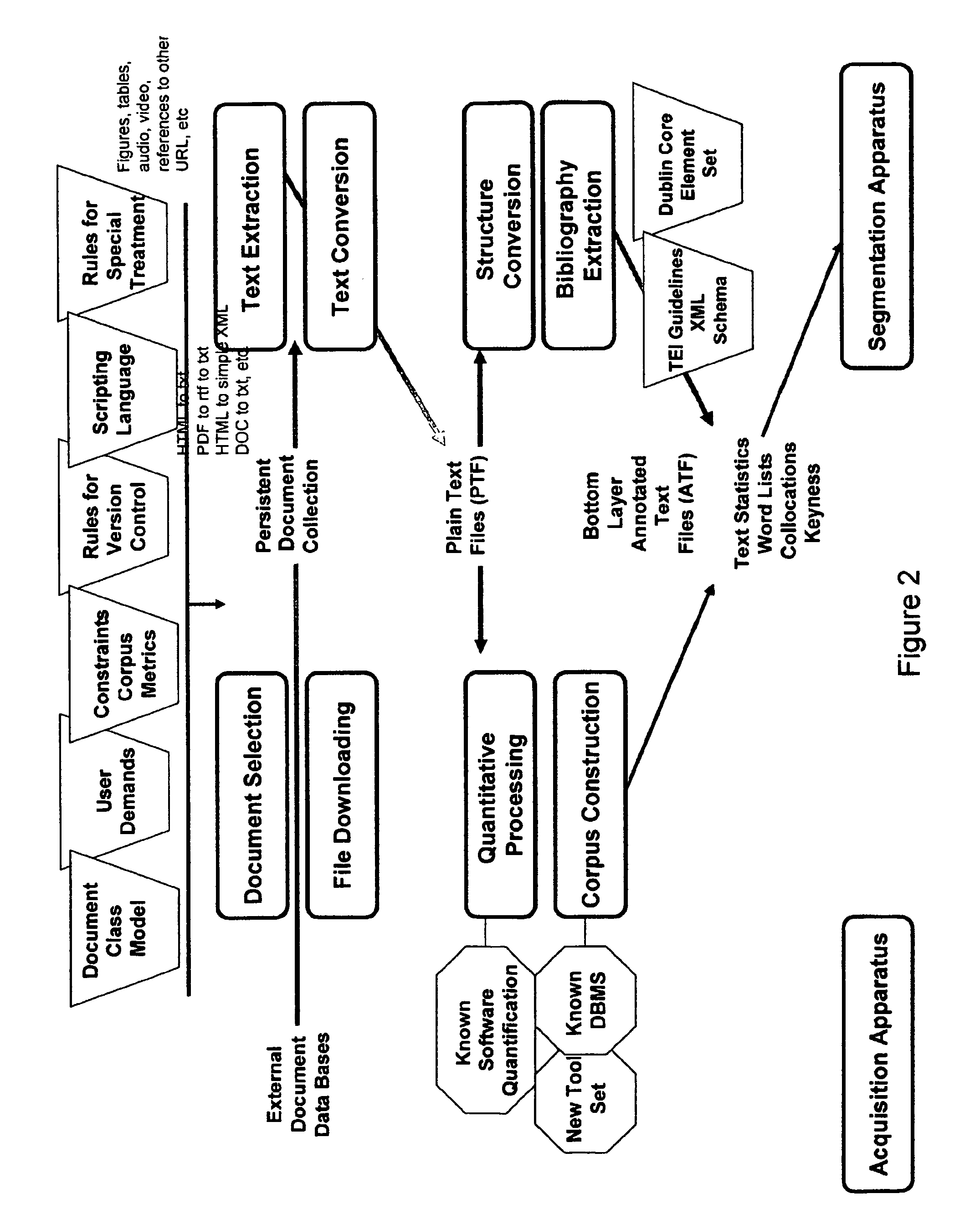Further she finds it difficult to rapidly locate the important parts in a context characterised by
time pressure.
The provision of the right information and saving time puts pressure on better acquisition procedures and as the amount of information that is available is steadily growing, the burden on indexing devices also becomes higher.
The challenge is to transform the essential documents into a system that differentiates between document types and construct representations of texts extracted from documents in a manner that attract the users' attention.
It will therefore not be possible to construct a description for a word and its interconnections to other words that is detached from context, and thereafter apply the description for the same word occurring in various contexts.
The user's main problem is to express her ‘information need’.
The problem for the user is related to the indexing devices (in a continuum from controlled to free-text indexing), and not so much related to the system's search functionality.
The main problem for the user is related to the user's ability to express her ‘information need’ as a request submitted to the search system.
However, the point made is that the user will meet the same type of problem regardless of whether the index structures contain so-called free-text terms or terms from a
controlled vocabulary (index terms using the notation form a
classification scheme which in fact is an extreme form of summarisation).
However, these relations are always much weaker than the original textual semantic relations that incorporate textual coherence.
A search request may fail for a number of reasons (the request fails when the system delivers a result that the user finds unsatisfactory).
Replacements may be in conflict the user's intention or the idea the user is trying to express through a set of terms (however, systems supporting this option normally ask the user to confirm term replacements).
This strategy however, increases the search scope (involves the operator OR) and thereby the
result list may exceed the user's futility point.
If the user considers the first terms as more important than the others, these automatic procedures may conflict with the user's intention.
Depending on the thesaurus, the search scope may accordingly be too large or too narrow with respect to the user's search intention.
The user's linguistic transformation problem is that several of these ‘
failure causes’ may be present in one search request.
However, the learning of a new language presupposes feedback about why a certain expression does not produce a satisfactory search result.
No system (yet) provides feedback explaining why the search request failed—a complicated feedback if several of the mentioned ‘
failure causes’ are present in the same request.
Since the user cannot inspect the system's language use, she will not be able to correct her own language use when formulating search requests.
Such diagnostic devices seem to have problems dealing with the fact that language use is a dynamic entity “whose times of greatest dynamism and change may come in the very process of interacting with a retrieval system” (Doyle 1963).
The percentage scores of current search engines are, in this context, entirely inadequate measure of a system's value for the user.
Despite all the work on search and indexing engines over the past 50 years, the problem of classifying, indexing and retrieving
digital content remains a major problem for
unstructured data such as text.
However, limitations of the statistical approach are still claimed with reference to various retrieval performance
metrics of systems employing statistical techniques is still (in absolute terms) low.
Representing textual content with compliance to prescriptions may explain the cause of several problems related to retrieval issues.
Secondly, different indexing strategies result in different index terms for the very same textual content (extracted from a document), known as the inter-indexers'
consistency problem, and the problem exists whether the indexing is performed by a human or a
machine.
The problem escalates when considering the fact that similar meanings may be expressed through sentences having different
syntactic structure or word constellations that
paraphrase single-word terms (‘diseases of children’ in stead of ‘paediatrics’).
The issue about lexical style is related to another indexing problem.
Selecting the ‘right’ words from a classification system or thesauri can be quite complicated when indexing documents with an ‘unexpected’ or innovative content.
The concept ‘logical access’ in
information retrieval refers to issues related to reducing the number of logical decisions the user must make when searching for information.
 Login to View More
Login to View More  Login to View More
Login to View More 


